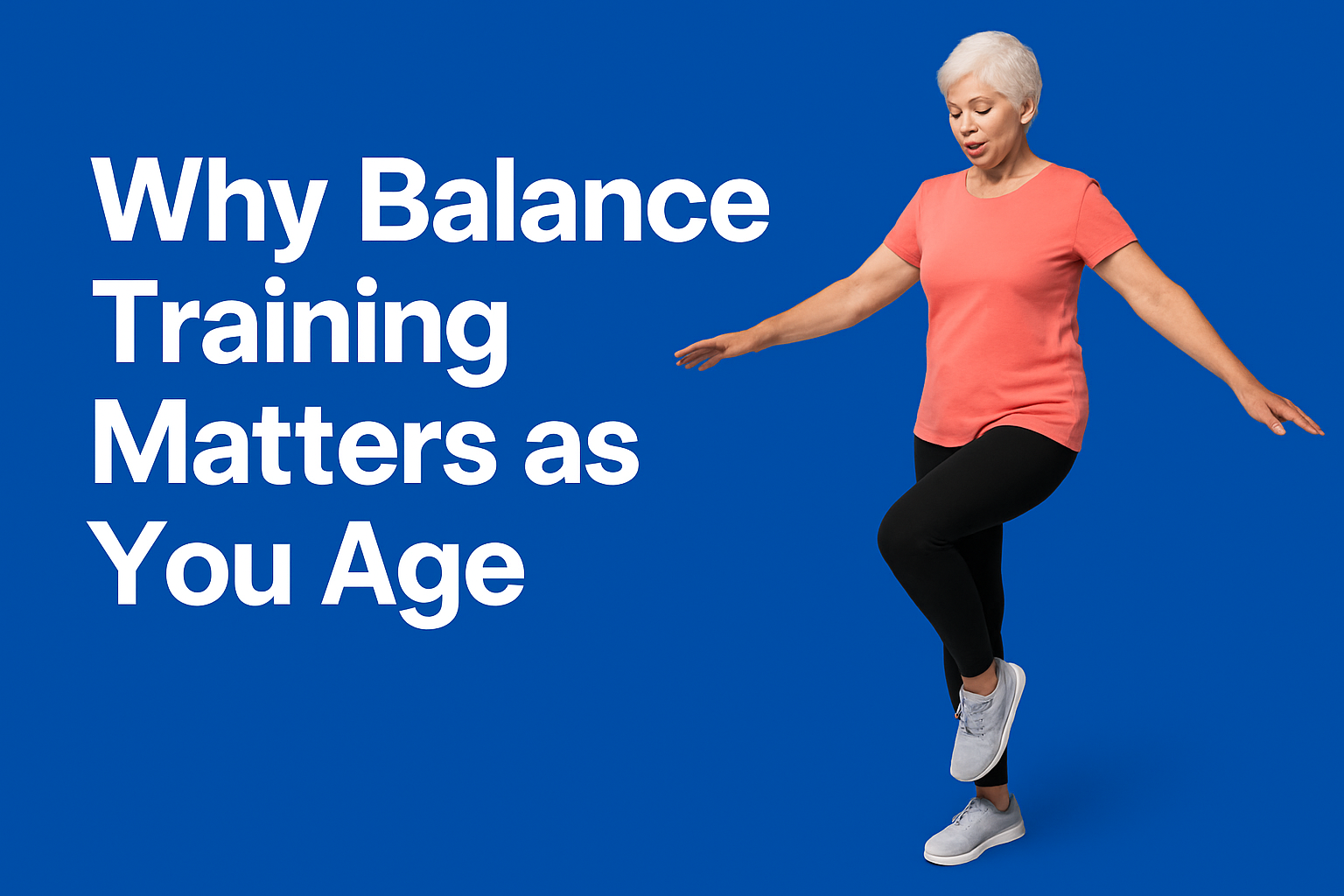Most people think of balance as something only older adults need to worry about. The truth is, balance affects everyone, no matter the age. Good balance helps you walk smoothly, exercise safely, and move with confidence. Poor balance makes everyday tasks harder and increases the risk of falls or injuries.
This article looks at why balance is important, what causes it to decline, and how physiotherapy can help strengthen it.
What Balance Really Means
Balance is your body’s ability to stay steady while standing still or moving. It depends on three main systems:
-
Your eyes, which help you see where you are.
-
Your inner ear, which senses movement and position.
-
Your muscles and joints, which tell your brain where your body is in space.
When these systems work together, you feel stable. If one system is weak, the others have to work harder.
Why Balance Declines
Many things can affect balance.
-
Ageing: Reflexes slow down, and muscles get weaker.
-
Injury: Ankle sprains, knee surgeries, or back problems change how your body moves.
-
Medical conditions: Issues like diabetes, arthritis, or inner ear problems interfere with coordination.
-
Sedentary lifestyle: Sitting too much makes the muscles that support balance weak.
-
Poor posture: Slouching changes how weight is distributed, which affects stability.
Everyday Signs of Poor Balance
It’s not always obvious that balance is slipping. Some common signs are:
-
Tripping or stumbling more often.
-
Feeling unsteady when turning quickly.
-
Struggling to walk in the dark.
-
Needing to hold onto furniture when standing up.
-
Hesitating to climb stairs or walk on uneven ground.
These may seem small at first, but over time, they increase the risk of falls.
Why Falls Are a Big Deal
Falls are not just about bumps and bruises. They can lead to serious injuries like fractures, especially in older adults. Recovery takes time and often causes people to lose confidence in moving around. This creates a cycle: fear of falling leads to less activity, which makes balance worse. Breaking this cycle early is key.
The Role of Physiotherapy
Physiotherapists play an important role in balance training. They don’t just treat injuries—they also prevent them by improving movement patterns. At Recovery Rehab, balance training often includes:
Assessment
Looking at posture, walking style, muscle strength, and flexibility.
Strength Training
Targeting leg, hip, and core muscles, which are vital for stability.
Coordination Exercises
Teaching the body to react quickly and safely to changes in position.
Vestibular Rehab
Helping people with dizziness or inner ear problems retrain their balance system.
Functional Training
Practicing real-life movements like standing from a chair, turning, or carrying groceries.
Simple Balance Tests You Can Try
Here are a few ways to check your balance at home:
-
Single-leg stand
Stand on one foot for as long as you can. Less than 10 seconds suggests balance could be improved. -
Heel-to-toe walk
Place one foot directly in front of the other and walk forward. If you wobble, coordination may be off. -
Eyes closed stand
Stand with your feet together, close your eyes, and see how steady you feel.
If any of these are difficult, it may be time to work on balance.
Easy Balance Exercises for Daily Life
These can be done at home without equipment:
-
Heel raises: Stand tall and lift your heels off the ground. Hold for a few seconds and lower slowly.
-
Single-leg stand: Hold onto a chair if needed, and practice standing on one leg.
-
Side steps: Step sideways across the room to strengthen hip muscles.
-
Tandem walk: Walk heel to toe in a straight line.
-
Seated marches: Lift one knee at a time while sitting to build control.
Start slow and build up as you feel more confident.
How Balance Training Helps More Than Just Stability
Balance work is not only about preventing falls. It also:
-
Improves posture.
-
Reduces muscle tension.
-
Builds core strength.
-
Enhances athletic performance.
-
Boosts confidence in daily life.
Even young people and athletes benefit because better balance means more efficient movement and lower risk of injuries.
Recovery Rehab Physiotherapy’s Approach
At Recovery Rehab, balance training is tailored to each person. For some, it may focus on gentle stability exercises. For others, especially athletes, it includes advanced drills like jumping, pivoting, or quick changes in direction. The goal is always the same: to restore confidence in movement and prevent future problems.
Final Thoughts
Balance is something we often take for granted until it starts slipping away. The good news is that it can be trained at any age. Whether you want to prevent falls, recover from injury, or simply move more confidently, working on balance is one of the most valuable steps you can take. With guidance from a physiotherapist, small daily exercises can make a big difference in long-term health.


